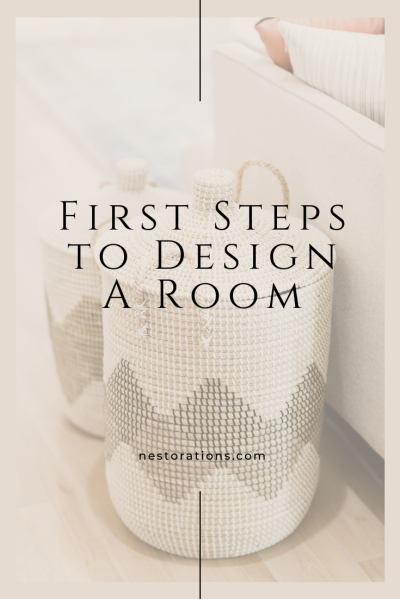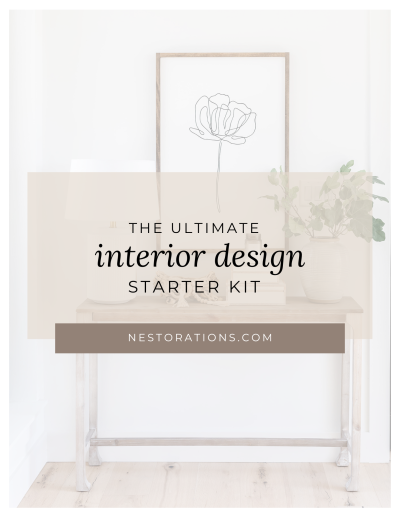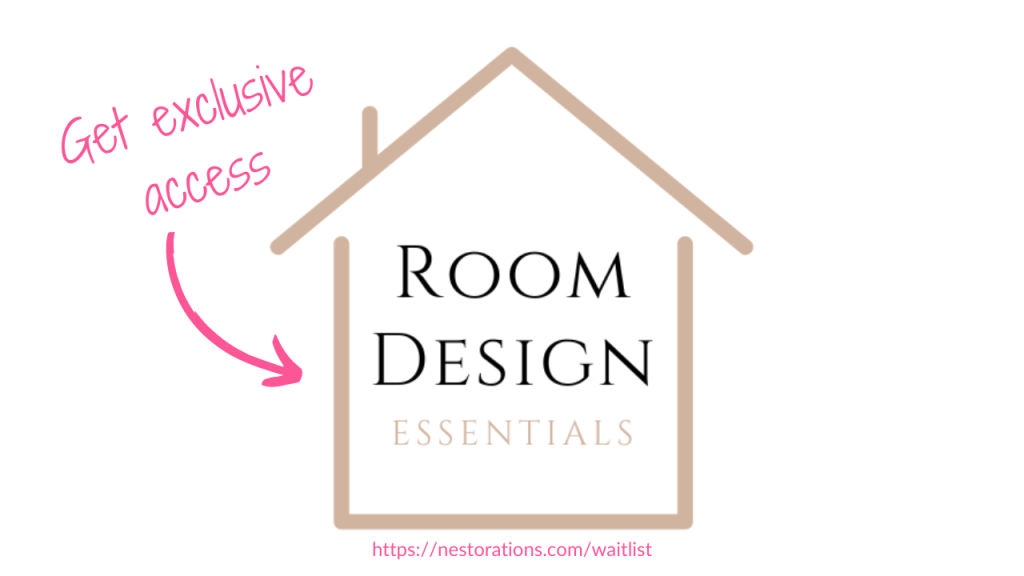
The holidays are over, the decorations are down and now your house feels empty. Now what? You might be tempted to quickly fill the empty spaces in your home, but before you buy anything new for your home, make sure to listen to this episode or read below. Are you ready? Let’s get started!
Listen to the Design Your Home Podcast
Before we get started I wanted you to download the newly updated (and FREE) guide that goes with this post: The Design Starter Kit. It’ll help you with the first steps designing a space and get you into action.
Common Mistakes We Make
The holidays are filled magical memories, fun experiences, and a lot of STUFF. So it’s natural that our homes feel full and over decorated with all the festivities.
But, once all the decorations comes down, it’s natural for our homes to feel kinda empty.
Then, that urge kicks in that makes us want to fill in those empty spaces and add more stuff. But, I want you to wait because this often turns into a mistake and you’re a high risk for buying things that won’t work, you’ll have to return later and waste time and money.
In this new year, we want to make intentional decisions about our homes.
Why? Because they’ll lead us closer to what we actually want. And there are some important steps to take to make sure we get this done well.
First Step: Make a Plan
The first thing you need to do is make a plan for your home’s design to get some direction and clarity about what you want.
Think about it…you wouldn’t go on a road trip without a plan, right?
You’d know your end destination, have GPS set up, and know where your stops are along the way. But when it comes to our homes, we often rush in without a plan and make impulse purchases before thinking everything through.
And do you know what that leads to? You guessed it– expensive design mistakes.
Questions to Help You Make a Plan
If you haven’t downloaded it yet…the FREE Design Starter Kit breaks breaks down some of the questions that you want to ask and answer BEFORE starting.
These are some of the EXACT questions I ask my high-end 1:1 design clients and my Room Design Essentials students. These questions will help give some clarity and direction about what you actually want. The questions help guide you to a plan by asking questions as simple as what room to start with and what mood or vibe you want in your home.
Step #2: Declutter and Take Inventory
Before we ever think of bringing anything new in we need to get rid of the old. It’s time to declutter and edit
Clutter is a big obstacle when you’re updating and decorating your home and the FIRST thing to tackle.
So before you bring anything new in, take a little time to tackle the clutter and get your Marie Kondo or The Home Edit on. STAT. Because a cluttered home leads to more stress in your life.
I share in the Starter Kit how to do this easily.
Also, taking inventory is about asking what you currently own that you want to keep in your updated space. Sometimes we keep things for reasons that don’t help us. Like the guilt we feel about grandma’s table that we don’t like.
And keeping things we don’t like actually prevents us from getting the end result we wanted.
I have a whole episode about this and what to do to help. You can read it here.

Step 3: Get Inspired
Your design takes off once you’ve found something that inspires you. So, let’s look for some design inspiration.
What do you love? What makes you do a double take? And what color palettes are you drawn to? There are lots of places you can look for home décorideas and inspiration but I like Pinterest, Instagram, or magazines and catalogs.
Choose ONE room or space to start (so you don’t get overwhelmed) and create a new Pinterest board for it. For example, you might pin pictures of chandeliers, tables or chairs that you love for your dream dining room.
Have fun with it and don’t rush the process. The more you pin, the more you’ll see patterns of what you like.
In the FREE Starter Kit I break this down with a few boxes to fill out to help you.
Step 4: Take Measurements
I get that this might not be the most fun or exciting part of the process. But, it’s a super important part. Because I can’t tell you how many times I’ve gone to a client’s home (before they reached out to me) and saw their mistake in forgetting this. It’s bad enough when the furniture doesn’t fit well in your space. But, I’ve even heard nightmare stories of furniture not fitting through the front door! Yikes!
All the measurements you need are broken down for you in the Starter Kit.

Step 5: Create a Ballpark Budget
Now that you’ve got a plan for what room you want to update, it’s important to figure out how much you want, need, or are willing to spend on the space.
I know, I know…this might not feel fun to do, but it’s a really important part of the design process.
Why? So you can be realistic about what you can and can’t do in your space.
Luckily, figuring out your ballpark design budget is easier than you think. And I break this down really easily in the Starter Kit. There is an easy template to use to help you.
First, you’re basically listing each item you need to buy. Next, write about how much you’re willing to spend on each item.
Make sure to be realistic about this. Doing a little online research or browsing will help you.
Final Thoughts...
We’ve just scratched the surface on the design process and there is more to this first phase that I’ve shared with you here. Not to mention two whole other phases I take my design students and clients through.
What to do next…
If you haven’t done this yet, make sure to download the FREE Design Starter Kit to help you take action. And I’d LOVE to connect with you over on Instagram. Hit follow and send me a DM. I answer every message I get and I can’t wait to hear from you.
Have an amazing day!
Discover How to DIY Your Design and Save Thousands of Dollars
Connect with me:




